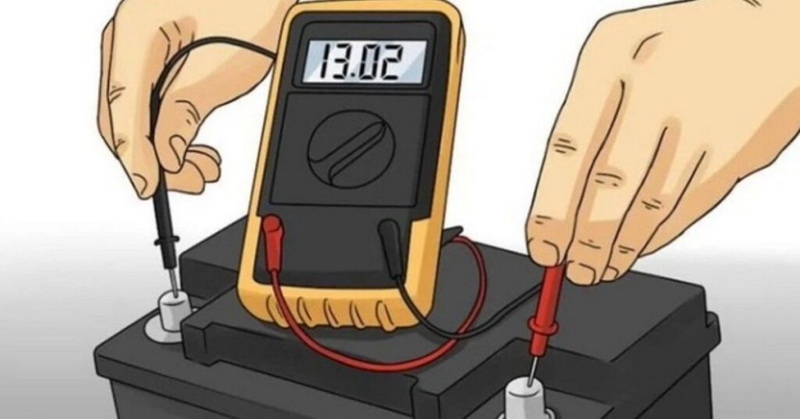Content Menu
● Introduction
>> Step 1: Safety First
>> Step 2: Visual Inspection
>> Step 3: Voltage Testing
>> Step 4: Load Testing
>> Step 5: Professional Battery Testing
>> Step 6: Common Issues and Troubleshooting
>> Step 7: Maintenance Tips for Longevity
● Conclusion
● FAQs
>> 1. What tools do I need to test my electric golf cart batteries?
>> 2. How often should I test my golf cart batteries?
>> 3. What does it mean if my battery shows low voltage?
>> 4. Can I replace just one bad battery in my golf cart?
>> 5. What should I do if my load test indicates a bad battery?
Electric golf carts rely heavily on their batteries for optimal performance. Regular testing of these batteries is crucial to ensure they are functioning correctly and to avoid unexpected breakdowns. This article provides a comprehensive guide on how to test electric golf cart batteries effectively, covering safety precautions, testing methods, and common issues that may arise.

Introduction
Golf cart batteries are essential components that power your golf cart and ensure its optimal performance. Regularly testing your golf cart batteries is crucial for assessing their health and determining if they need maintenance or replacement. In this article, we will provide you with a step-by-step guide on how to test your golf cart batteries effectively.
Batteries in electric golf carts typically consist of lead-acid or lithium-ion types. Understanding the specific requirements and characteristics of your battery type is essential for proper maintenance and testing.
Step 1: Safety First
Before starting any battery testing procedures, it is essential to prioritize safety.
- Always wear protective gloves and eyewear to prevent any accidents or exposure to battery acid.
- Ensure the golf cart is turned off and the key is removed.
- Work in a well-ventilated area to avoid inhaling any harmful gases released during the testing process.
Step 2: Visual Inspection
Begin by visually inspecting the batteries for any signs of damage, corrosion, or leaks.
- Look for bulging or cracked cases, loose connections, or excessive buildup of corrosion on the terminals.
- If you notice any of these issues, it may indicate that the battery needs immediate attention. Corrosion can be cleaned using a mixture of baking soda and water, but ensure you wear gloves and goggles while doing so.
Step 3: Voltage Testing
To determine the voltage of each battery, you will need a digital multimeter.
1. Set the multimeter to the DC voltage setting and ensure it can measure the battery voltage range (typically 6V or 8V for golf cart batteries).
2. Test each battery individually by placing the multimeter's positive probe on the positive terminal of the battery and the negative probe on the negative terminal.
3. Take note of the voltage reading displayed on the multimeter. A fully charged battery should show a voltage between:
- 6.3V and 6.5V for 6V batteries.
- 8.3V and 8.5V for 8V batteries.
If any individual battery shows significantly lower voltage than expected, it may be failing or undercharged.

Step 4: Load Testing
Voltage testing alone may not provide a complete picture of a battery's health. Performing a load test allows you to assess its capacity to deliver power under a simulated load.
1. Use a load tester specifically designed for golf cart batteries. Follow the manufacturer's instructions for connecting the load tester to the battery terminals.
2. Apply a load to the battery for a specific duration (usually around 15 seconds) while monitoring the voltage drop.
3. A healthy battery should maintain a stable voltage during this load test. If the voltage drops significantly (more than 0.5 volts), it may indicate a battery with reduced capacity or internal damage.
Step 5: Professional Battery Testing
If you have concerns about the battery's performance or are unsure of the testing process, it is advisable to consult a professional battery specialist. They have access to advanced battery testing equipment that can provide a more accurate assessment of the battery's condition.
Step 6: Common Issues and Troubleshooting
Understanding common issues with golf cart batteries can help you troubleshoot effectively:
- Charging Issues: If your golf cart fails to hold a charge, check if it was adequately charged before use. A faulty charger can also contribute to this problem; ensure it is functioning correctly by observing indicator lights during charging.
- Corroded Terminals: Corrosion on terminals can prevent proper charging and discharging. Regularly clean terminals with a solution of baking soda and water to maintain connectivity.
- Loose Connections: Ensure all connections between batteries are tight and secure. Loose connections can lead to power loss and erratic performance.
- Battery Age: Most golf cart batteries last between three to six years depending on usage and maintenance practices. If your batteries are nearing this age range and show signs of decline in performance, consider replacing them as preventative maintenance.
- Electrolyte Levels: For flooded lead-acid batteries, regularly check electrolyte levels in each cell. Add distilled water as necessary, ensuring not to overfill, which can cause spillage during charging.
Step 7: Maintenance Tips for Longevity
Proper maintenance can significantly extend the life of your golf cart batteries:
- Regular Charging: Always charge your batteries after use, even if you have only driven a short distance. This practice helps maintain optimal charge levels.
- Avoid Deep Discharges: Try not to let your batteries discharge below 50%. Deep discharges can shorten their lifespan significantly.
- Temperature Control: Store your golf cart in a temperature-controlled environment when possible. Extreme temperatures can negatively impact battery performance and longevity.
- Periodic Equalization: For flooded lead-acid batteries, performing an equalization charge occasionally helps balance individual cell voltages and prevents sulfation buildup.
- Monitor Performance: Keep track of how far your golf cart travels per charge over time; significant drops in distance could indicate deteriorating battery health.
Conclusion
Testing your golf cart batteries regularly is essential for maintaining their performance and longevity. By following the steps outlined in this guide, you can accurately assess the voltage and capacity of your batteries while identifying potential issues early on. Remember that early detection of battery issues can help prevent unexpected breakdowns and ensure a smooth golfing experience. If you have any doubts or concerns about your testing results, consulting with professionals is always recommended for expert advice.

FAQs
1. What tools do I need to test my electric golf cart batteries?
You will need a digital multimeter for measuring voltage, possibly a load tester for conducting load tests, and safety gear like gloves and goggles.
2. How often should I test my golf cart batteries?
It is advisable to test your golf cart batteries at least once every few months or before extended use, especially if you notice performance issues.
3. What does it mean if my battery shows low voltage?
If your battery shows low voltage (below recommended levels), it may indicate that it is undercharged, damaged, or nearing the end of its lifespan.
4. Can I replace just one bad battery in my golf cart?
While technically possible, it is generally recommended to replace all batteries in a set simultaneously to ensure uniform performance and longevity across all cells.
5. What should I do if my load test indicates a bad battery?
If your load test indicates that a battery is failing, consider replacing it immediately to avoid further issues with your golf cart's performance.










































